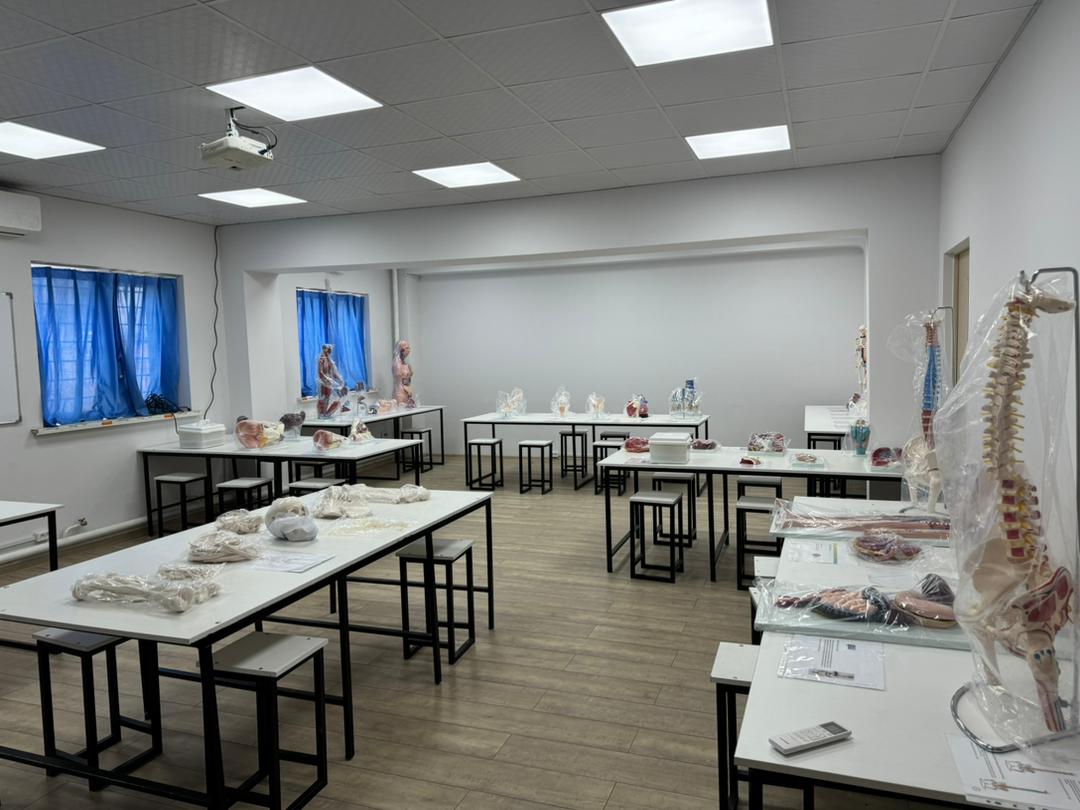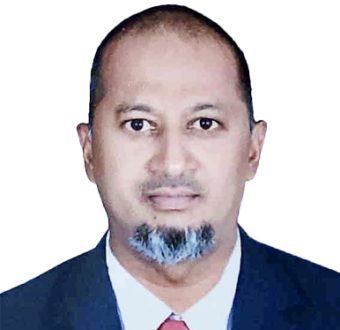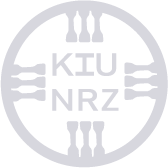Department of Anatomy, Histology & Embryology
The Department of Anatomy, Histology & Embryology at KIU-NRZ lays the foundational framework for all medical sciences. The department offers an in-depth understanding of the human body through structured theoretical instruction, dissection-based practicals, and advanced histological techniques.
Our curriculum is aligned with CBME (India 2024) and integrates clinical relevance from the early semesters, helping students connect basic sciences with patient care.
- Plastinated Human
- 3D Dissection Table
- Histology Lab (Microscopy)
- Embryology Models

Team

Dr. Vijesh Ramnarayan,
MD (Anatomy)
Lectures

Dr. B.Vignesh,
MBBS
Tutor

Dr. P. Harinath,
MD (Anatomy), MHPE (Medical Education), PG Dip in Ed Psychology.
Visiting Faculty

Dr. Saravanakumar, MSc, PhD (Anatomy)
External Examiner
Departmental / Course Objectives
1. Explain the normal disposition, interrelationships, and functional/cross-sectional anatomy of the body's organs and structures.
2. Identify microscopic and elementary ultrastructures of organs/tissues, correlating them with functions and understanding alterations in disease.
3. Describe the basic structure and connections of the central nervous system, analyzing its integrative/regulative functions and localizing gross lesions based on deficits.
4. Outline the principles and sequential development of organs/systems, recognizing critical stages, effects of teratogens/mutations/environmental hazards, and explaining developmental variations/abnormalities.
1. Locate and identify all body structures and mark their topography in living anatomy.
2. Explain the clinical basis of common procedures like intramuscular/intravenous injections, lumbar punctures, and kidney biopsies.
3. Identify organs and tissues under a microscope.
4. Understand principles of karyotyping and identify gross congenital anomalies.
5. Interpret CT scans, sonograms, MRIs, and angiographies, understanding the principles of newer imaging techniques.
Integrate anatomical knowledge horizontally and vertically with clinical correlations, understanding the relationship between structure and function and the anatomical basis of clinical conditions and procedures.

Competency Framework
- Total Topics: 82
- Total Competencies: 413
- Total Practical Sessions Suggested: 284
- Certification Required: 1 (Topic 65: AN65.1)
Instructional Delivery
Theory
- Interactive Lectures
- Small Group Discussions (SGDs)
- Self-Directed Learning (SDL)
Practical Skills
- Structured practical instructions
- DOAP Method
Assessments
• Methods: Theoretical (online exams), Practical/Clinical & viva voce.
• Scheduling: daily or weekend exams
• Passing Criteria: >50% in both theory and practical.
• Methods: Theory (Pen-and-paper), Practical/Clinical, viva voce. Logbook Assessment & Professional Development Program (AETCOM):
• Scheduling: mid-semester & semester-end exams.
• Passing Criteria: >50% in both theory and practical.
• Methods: Theory (Pen-and-paper), Practical/Clinical, Viva/Oral & CBME Components Assessment.
• Scheduling: End of MBBS I
• Passing Criteria: > 50% separately in Theory and in Practical in each exam per phase.
- Pasing Criteria: > 50% of the grand score per subject.
- Weightage of the grand score per subject:
-
- University/SA: 60%
- Process assessment: 40%
- Weekend exams (FFA) ➝ 10%
- Mid-semester exam & & semester-end exam (IA) ➝ 10%
- General performance (assignments, seminars, case presentations, problem-solving, community projects, quizzes, competency certifications, museum study, logbooks, and SDL skills) ➝ 10%
- Practical/Clinical performance ➝ 10%


Grading
| Letter Grade | Grade Point | % of Marks |
| O (Outstanding) | 10 | 86-100 |
| A+ (Excellent) | 9 | 70-85 |
| A (Very Good) | 8 | 60-69 |
| B (Good) | 7 | 55-59 |
| C (Above Average) – Passing criteria | 6 | 50-54 |
| F (Fail) / RA (Reappear) | 0 | Less than 50 |
| Ab (Absent) | 0 | - |
| NC (Not Completed) | 0 | - |
| RC (Repeat the Course) | 0 | 0 |
Recommended literature
Textbook:
- Singh V. Textbook of Anatomy. 4th ed. New Delhi: Elsevier; 2023
- Singh V. Textbook of Clinical Embryology. 3rd ed. New Delhi: Elsevier; 2022.
- Pushpalatha K, Bhat D. Inderbir Singh’s Textbook of Human Histology with Colour Atlas and Practical Guide. 11th ed. New Delhi: Jaypee Brothers Medical Publishers; 2025.
- Singh V. Textbook of Clinical Neuroanatomy. 5th ed. New Delhi: Elsevier; 2024.
- Pal GP. Medical Genetics. 4th ed. New Delhi: AITBS Publishers India; 2025.
Atlas:
- Netter FH, Machado CA. Netter Atlas of Human Anatomy: Classic Regional Approach. 8th ed. Philadelphia: Elsevier; 2023.
- Gilroy AM, MacPherson BR, Wikenheiser J, Schuenke M, Schulte E, Schumacher U. Atlas of Anatomy. 5th ed. Stuttgart: Thieme; 2025.
- O’Dowd G, Bell S, Wright S. Wheater’s Functional Histology: A Text and Colour Atlas. 7th ed. Philadelphia: Elsevier; 2023.








